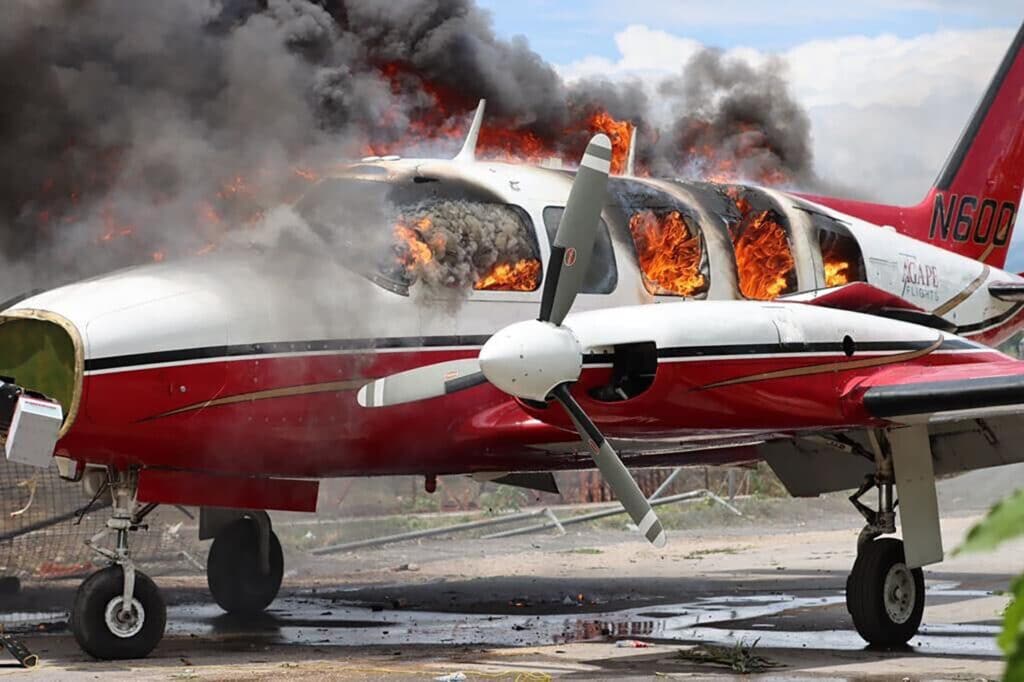Rampant violence in Haiti and the Dominican Republic caused by gangs is causing havoc for marine biologists. But they are desperately needed due to overfishing decimating the ecosystem. The Associated Press has the story:
Major thoroughfares in Haiti blocked by gangs fond of extortion
PEPILLO SALCEDO, Dominican Republic (AP) — In a blue bay that spans the border of Haiti and the Dominican Republic, fishermen from both countries recently aired grievances in a rare face-to-face meeting thanks to the efforts of marine biologist Jean Wiener.
The meeting, overseen by Dominican naval officers with rifles, was no small feat for Wiener, who has been forced to work on conserving this biologically sensitive region from afar — his house in Bethesda, Maryland — because of rampant violence in Haiti, his homeland. Now the prize-winning biologist stood in the steaming Caribbean heat at the mouth of an ominously named spot called the Massacre River, trying to bring together the two sides and find a solution that will not only save their livelihoods but also vital marine resources in a region under extreme pressures from climate change.
“The constant fishing, or overfishing, in these areas has decimated an entire ecosystem,” said Rodolfo Jimenez, director of an agricultural border project in the Dominican Republic.
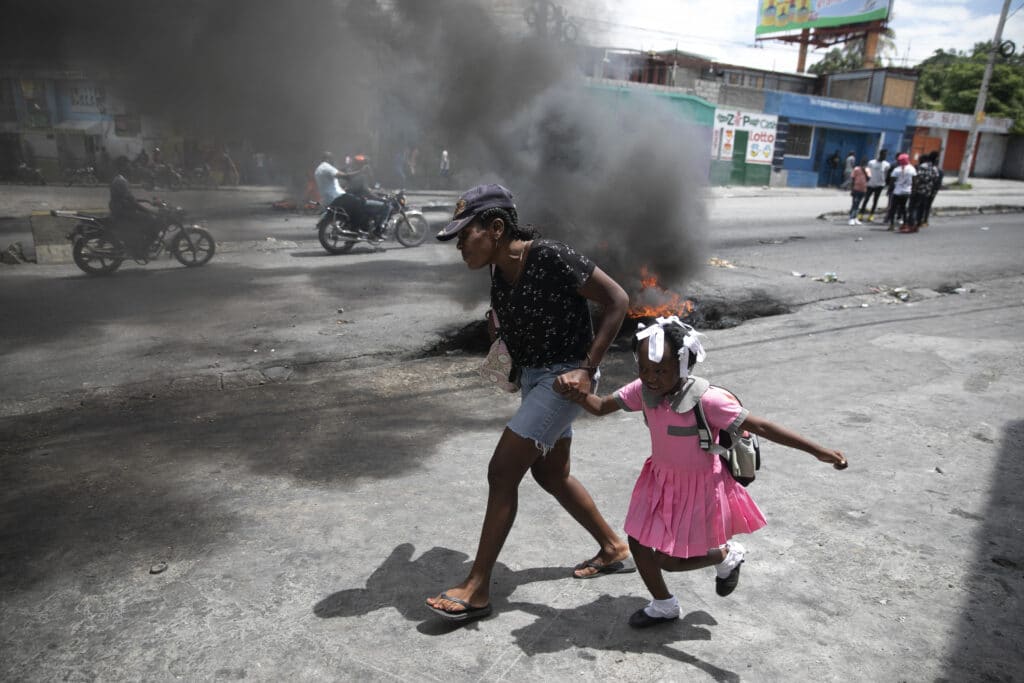
The Haitian fishermen, standing across from Jimenez on the beach, agreed. But they also said they were not to blame for the damage in the Monte Cristi National Park in northwestern Dominican Republic.
Wiener’s work has grown in significance over the years in large part because of charcoal vendors in Haiti who hack down trees for cooking fuel and, more recently, wade into the country’s mangroves, the tropical vegetation that is a natural barrier against the Caribbean’s increasingly destructive hurricanes. With ocean storms becoming more severe, Haiti’s coastline and its biodiversity are becoming even more vulnerable.
It was the first trip for Wiener, leader of Foundation for the Protection of Marine Biodiversity, since November 2021, his absence largely attributed to the violent gangs that have engulfed the Haitian capital in recent years and reached parts of the countryside. Nominally present already and undermined further with the July 2021 assassination of President Jovenel Moise in the bedroom of his home, the government has done little to wrest control from the brazen gangs.
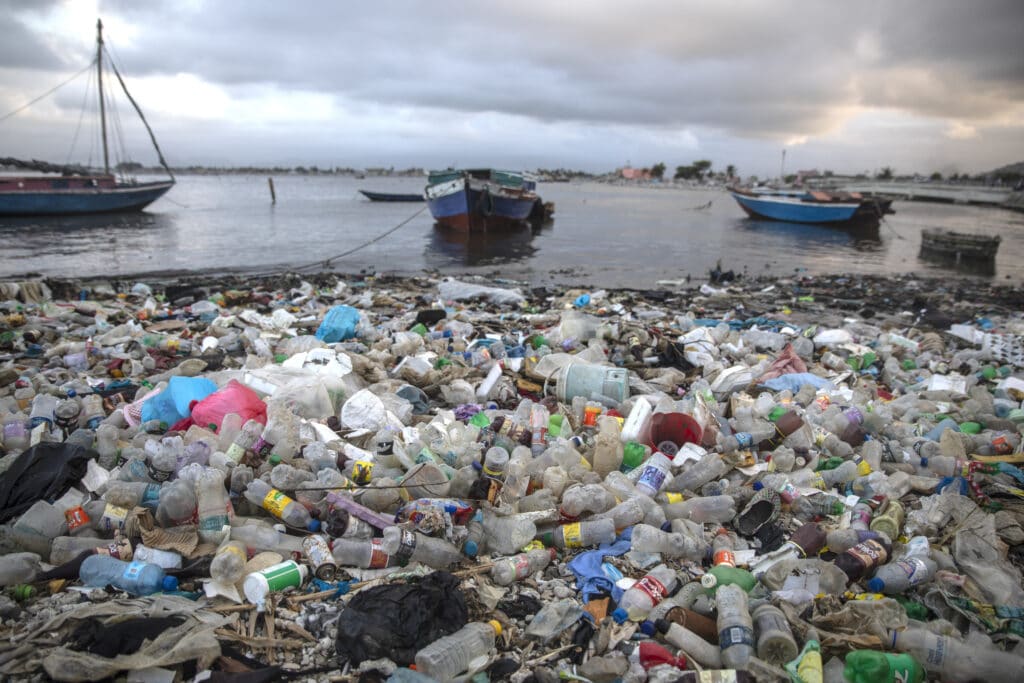
For years, Wiener used to visit Haiti every month or so, but now restricts his trips to only a few times a year while being compelled to work remotely and delegate more responsibility to staff members dispersed throughout the country. Haiti is just too dangerous otherwise. So when he does come, as he did for three weeks in March, he hopscotches the country via puddle-jumper plane; travel by road is too perilous, with major thoroughfares blocked by gangs fond of extortion. Many passengers hide in their cars by lying on the backseat.
It’s a conundrum that bedevils Jean and others like him around the world. As climate change plays a greater role in contributing to conflicts, that in turns makes it more difficult to carry out scientific research and work on environmental projects that seek to offset the effects of climate change. The environmental group Global Witness released a report last year noting that 2020 saw a record number of environmental activists killed around the world; the death toll of 227 was the highest number recorded for a second consecutive year, with Colombia having the highest number of recorded attacks, with 65, and Mexico second, with 30.
“The extent to which failed states make it difficult for scientists and the international scientific community to work on these issues simply means it will be more difficult to solve these problems,” said Peter Gleick, president emeritus and a senior fellow with the Pacific Institute, an Oakland-based research group that focuses on water issues around the world.
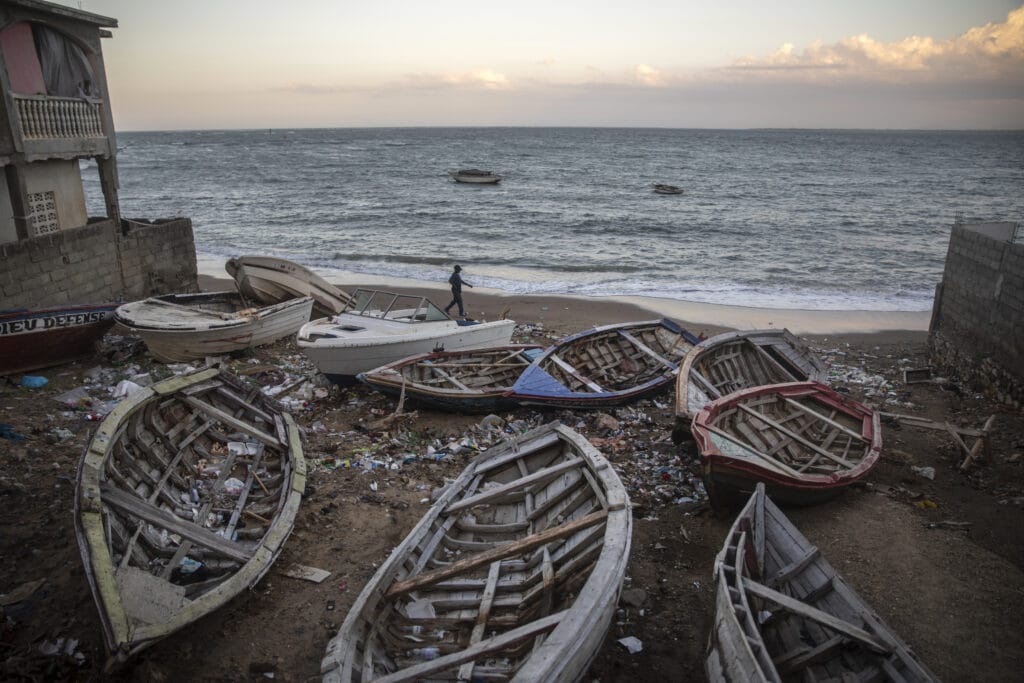
Said Jessica Olcott Yllemo, senior fellow for climate security at the American Security Project, a nonpartisan group in Washington, D.C.: “If the temperatures continue to rise and you don’t have basic functions because you don’t have a functioning government, climate sort of just exacerbates all of those different threats and hazards.”
In several reports released in October, the U.S. signaled that climate change would occupy a central role in security strategy, a policy shift that underscores how climatic changes are exacerbating long-standing problems. One of the studies identified 11 countries that were of “greatest concern,” because they were especially vulnerable to climate change and unable to deal with the attendant problems. Haiti was among them.
The Caribbean nation has the highest travel advisory—”Level 4: Do Not Travel”—from the U.S. State Department due to kidnapping, crime and civil unrest. Kidnapping, the State Department says, “is widespread and victims regularly include U.S. citizens.” In a March newsletter, the U.S. Embassy offered U.S. citizens in Haiti a tip sheet on ways to avoid being kidnapped.
The kidnappings have persisted for years, rising significantly after the 2017 departure of a U.N. peacekeeping mission. In October, 16 U.S. citizens, including five children, and one Canadian, were part of a group of missionaries who were abducted by the dreaded 400 Mawozo gang and held for ransom for two months. An untold number of Haitian Americans have also been kidnapped.
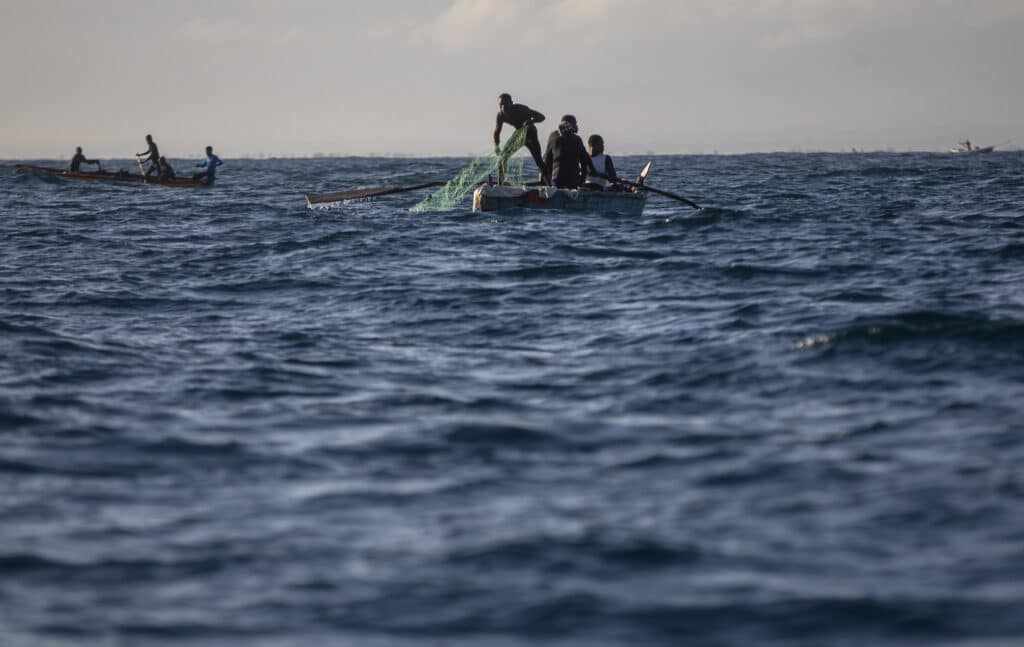
This past week, north of the Port-au-Prince capital, fighting between 400 Mawozo and a rival gang led to the displacement of thousands of people and the killing of at least 20, including six children. Officials warned that the main roads leading to Haiti’s northern region could be cut off as a result of the fighting, as has already happened to a thoroughfare heading south.
The March meeting Wiener set up was held at the beach of an estuary meant to be easy to reach for both parties, just a few steps on the Dominican side of the border. It was a Thursday morning, and a white mangrove provided shade to Wiener, the fishermen and their associations, a few environmental officials from the two countries and the Dominican naval officers. On the shore behind them stood a string of wooden posts used to hold seines for catching eels.
A big part of the two sides’ discussion was over the exact location of the border above Hispaniola, the name of the island shared by Haiti and the Dominican Republic.
“The marine border is not completely north, it is northwest,” Cmdr. Irving Cabrera, of the Dominican Navy, said in the meeting.
The meeting took place at the mouth of a river with a name that harkens back to a bloody episode on the island of Hispaniola: The Massacre River, also the Dajabón River. Though named for an earlier massacre, it’s mostly known for when Dominican soldiers, under the orders of dictator Rafael Trujillo in 1937, executed thousands of Haitian families and Dominicans of Haitian descent. The weapon of choice was a machete.
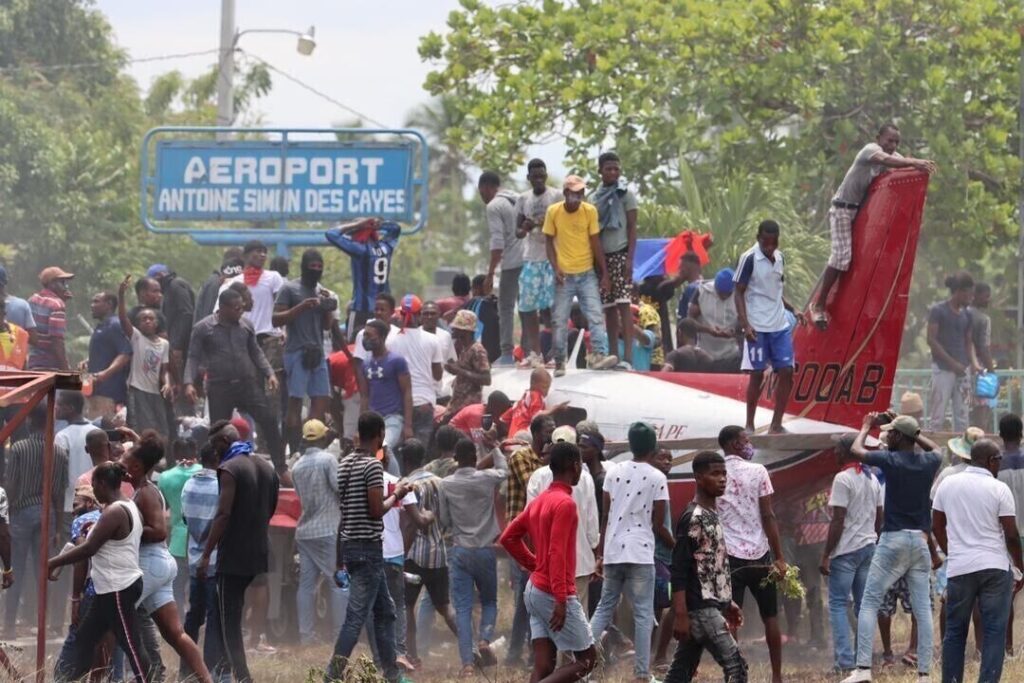
“I don’t think it was lost on either side of the border,” said Frederick Payton, of AgroFrontera, the Dominican environmental group that worked with Wiener to organize the March meeting. Payton also helped lead the meeting. “The Río Massacre kind of represents both the tension and the integration of the economies in the border region.”
The antipathy toward Haitians persists today, not least with Dominican President Luis Abinader’s newly launched plan to build a multimillion-dollar, 118-mile (190-kilometer) wall along the border. Construction has already begun.
Bereft of the usual tension, let alone animosity, the beach meeting lasted a few hours, with both sides able to voice their concerns as Payton and Wiener served as peacekeepers of sorts in the absence of a strong border state. Both stressed the importance of seeking solutions instead of dwelling on problems.
“We were trying to frame the meeting not just as a session to complain and to point fingers, but to try to look for some possible solutions that will take time,” Payton said. “But will give each side hope and expectation that something will be done in the future.”
Out of the meeting came the idea of creating a boat registration and a licensing for fisheries so Haitian and Dominican authorities know who is in the water and where they’re going.
Perhaps Wiener’s biggest achievement has been creating Haiti’s first protected marine areas, including the Three Bays National Park known for its mangrove forests, coral reefs and seagrass beds, but he concedes that his work has become more difficult working remotely. Josué Celiscar, field operations director for Wiener’s foundation and a graduate student in agronomy, says the same, noting the inevitable delays that accompany projects.
“When you are the director, when you are present, you are executing the project,” Celiscar said. “When you aren’t there, you’re left with the assistant. It’s not going to be the same thing.”
In recent years, Wiener has seen the brother of his assistant director kidnapped and later released and spends considerable time making sure his staff is safe.
Born in Haiti, Wiener and his family fled the Francois “Papa Doc” Duvalier regime when he was six months old for Queens, New York. He went back to Haiti at six while Duvalier’s son and successor, Jean-Claude “Baby Doc,” was in power and left again for college, studying biology at the University of Bridgeport in Connecticut. Haiti came calling once more, and Wiener returned at 23 and, in 1992 started his foundation. Now 57, Wiener is a married father of two children, a boy and a girl.
In the end, the March trip to Haiti proved fortuitously uneventful—though danger wasn’t far away.
When Wiener visited the southwestern part of the country, in the coastal town of Les Cayes, his driver got wind of protesters’ plans to storm the local airport. The attack didn’t happen until after Wiener flew out, a few days later: People ran onto the tarmac and torched a small plane owned by a U.S. missionary group. One person died and five others were injured, including four police officers, according to a police official working at the airport.
One day during his recent visit to northern Haiti, Wiener brought to the beach a group that included game wardens and university students with an interest in the environment. The idea was to get them in the water, make them feel comfortable and learn the basics of snorkeling.
Standing on the sand, Wiener gave a brief lesson on how to use a snorkel, explaining how to expel water from the breathing device. Minutes later they waded into the surf. A pufferfish floated toward them.
One man picked up the blowfish and studied it. Wiener told him to put the fish back in the water, which he did. Inflated like a ball as it bobbed supine, the puffer looked as if it were playing dead.
Wiener sloshed knee-high through the shore’s lucent water, and gently picked up the prickly fish with both hands. He then walked a few steps out, toward the northern horizon, and sent the pufferfish into the ocean.
“We really know that there’s a part, you know, where you can be in a classroom,” Wiener said later from the hotel, where a few security guards patrolled the grounds with rifles. “But it is critically important that people actually get out and touch and see and feel the environment.”
___
By TRENTON DANIEL and PIERRE-RICHARD LUXAMA
Associated Press journalist Trenton Daniel reported from New York.

